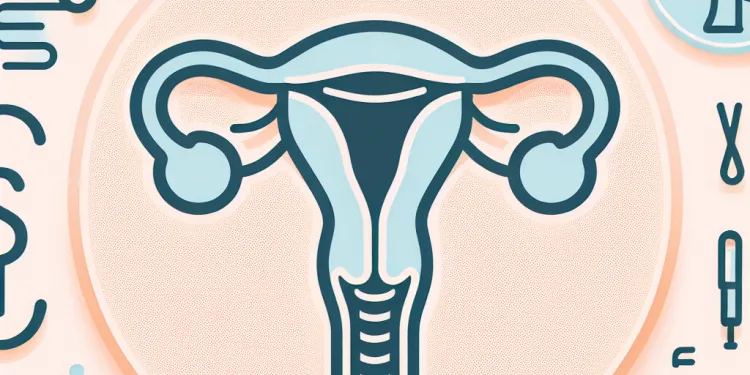
Find Help
More Items From Ergsy search
-

What is the womb lining test?
Relevance: 100%
-

What is the Womb Lining test?
Relevance: 98%
-

Is a womb lining test painful?
Relevance: 98%
-

Is the womb lining test covered by the NHS?
Relevance: 97%
-

Why is a womb lining test performed?
Relevance: 97%
-

Is the womb lining test covered by the NHS?
Relevance: 96%
-

Is the womb lining test painful?
Relevance: 95%
-

How is a womb lining test conducted?
Relevance: 94%
-

Can a womb lining test detect cancer?
Relevance: 93%
-

Are there risks associated with a womb lining test?
Relevance: 92%
-

Can a womb lining test detect cancer?
Relevance: 92%
-

How is the womb lining test performed?
Relevance: 91%
-

Are there any risks associated with the womb lining test?
Relevance: 91%
-

Why might someone need a womb lining test?
Relevance: 90%
-

Can I drive after the womb lining test?
Relevance: 87%
-

What happens after a womb lining test?
Relevance: 87%
-

How should I prepare for a womb lining test?
Relevance: 84%
-

Is there any follow-up required after a womb lining test?
Relevance: 83%
-

How long does it take to get results from a womb lining test?
Relevance: 81%
-

Does the womb lining test require any special preparation?
Relevance: 81%
-

How long does it take to get results from a womb lining test?
Relevance: 80%
-

What does an evaporation line mean on a pregnancy test?
Relevance: 51%
-

What is a lot line adjustment?
Relevance: 35%
-

Are digital pregnancy tests more accurate than non-digital tests?
Relevance: 34%
-

How does a pregnancy test work?
Relevance: 33%
-

What is a pregnancy test?
Relevance: 32%
-

What should I do if I get unclear results on a pregnancy test?
Relevance: 30%
-

When should I take a pregnancy test?
Relevance: 29%
-

What can cause a false positive pregnancy test?
Relevance: 28%
-

How long should I wait to read the results of a pregnancy test?
Relevance: 27%
-

Can a pregnancy test expire?
Relevance: 27%
-

What are the different types of pregnancy tests?
Relevance: 27%
-

What if my pregnancy test is positive?
Relevance: 26%
-

Can a pregnancy test detect a miscarriage?
Relevance: 26%
-

Rectal swab test for Gonorrhoea and Chlamydia
Relevance: 25%
-

Can drinking a lot of water affect pregnancy test results?
Relevance: 24%
-

Do all pregnancy tests detect the same levels of hCG?
Relevance: 24%
-

Is there an autism test?
Relevance: 24%
-

What is a stool DNA test?
Relevance: 24%
-

How soon can a pregnancy test detect pregnancy?
Relevance: 24%
Understanding the Need for a Womb Lining Test
Introduction
A womb lining test, medically known as an endometrial biopsy, is a procedure many UK women undergo when experiencing certain reproductive health issues. This test involves collecting a small tissue sample from the lining of the uterus (endometrium) to diagnose various conditions.Diagnosing Abnormal Uterine Bleeding
One of the primary reasons for a womb lining test is to evaluate abnormal uterine bleeding. Women experiencing heavy, prolonged, or irregular periods may require further investigation to determine the underlying cause. The test helps detect endometrial hyperplasia (a thickening of the womb lining) or other structural abnormalities that may need treatment.Investigating Fertility Issues
For those with fertility concerns, the womb lining test plays a crucial role. In some cases, a problematic endometrium can interfere with embryo implantation. The test helps assess whether the uterine lining is receptive, aiding in diagnosis and management of unexplained infertility. Treatment plans can be tailored based on the findings, potentially improving fertility outcomes.Screening for Endometrial Cancer
Another vital reason for the test is screening for endometrial cancer, especially in women with risk factors such as postmenopausal bleeding. Early detection of cancerous or pre-cancerous cells is crucial for successful treatment and improving survival rates. The test provides conclusive insights that might prompt further diagnostic or therapeutic interventions.Assessing Hormonal Imbalances
A womb lining test can also help identify hormonal imbalances affecting the endometrium. Imbalances in estrogen and progesterone, for example, may lead to reproductive health issues. By evaluating the impact of these hormones on the uterine lining, healthcare providers can recommend appropriate treatments, such as hormone therapy, to restore balance.Conclusion
In conclusion, a womb lining test is a vital diagnostic tool in assessing various reproductive health issues. Whether investigating abnormal bleeding, infertility, or potential cancer, the test provides essential information to guide treatment decisions. Understanding its role can empower women to make informed choices about their health, seeking timely medical advice and intervention when necessary. UK women should consult their healthcare providers to determine if this test is appropriate for their specific health concerns.Understanding the Need for a Womb Lining Test
Introduction
A womb lining test is also called an endometrial biopsy. Many women in the UK have this test when they have certain health issues with their reproductive system. During this test, a doctor takes a small sample from the lining inside the womb to find out if there is anything wrong.Diagnosing Abnormal Uterine Bleeding
One main reason for a womb lining test is to check unusual bleeding from the womb. Women with very heavy, long, or irregular periods might need this test. It can help find out if the lining of the womb is too thick or if there are any other problems that need to be fixed.Investigating Fertility Issues
This test is also important if a woman is having trouble getting pregnant. Sometimes, the lining inside the womb can make it hard for a baby to start growing. The test can show if the womb lining is healthy and can help doctors understand why a woman can't get pregnant. This helps doctors make a plan to improve the chances of having a baby.Screening for Endometrial Cancer
Doctors may use this test to look for signs of cancer in the womb, especially if a woman is bleeding after menopause. Finding cancer early is very important for successful treatment. The test can show if there are any cancer cells, and doctors can decide what to do next if needed.Assessing Hormonal Imbalances
The test can also show if there are hormone problems that affect the womb lining. If hormones like estrogen and progesterone are not balanced, there might be problems. The test helps doctors see this so they can suggest treatments to fix the hormone levels.Conclusion
To sum up, the womb lining test is an important tool to find out about different health issues with the reproductive system. The test helps in checking unusual bleeding, problems with getting pregnant, or cancer in the womb. It gives important information to help doctors choose the right treatment. Women in the UK should talk to their doctors to see if this test is right for them. Support like talking with a healthcare provider can help in understanding this process.Frequently Asked Questions
What is a womb lining test?
A womb lining test, also known as an endometrial biopsy, is a procedure used to take a small sample of tissue from the lining of the womb (endometrium) for examination.
Why might someone need a womb lining test?
Someone might need a womb lining test to investigate abnormal uterine bleeding, monitor the effects of hormone therapy, or evaluate the endometrium in cases of infertility or recurrent miscarriages.
How is a womb lining test performed?
A womb lining test usually involves inserting a thin tube through the cervix into the uterus to collect a small sample of tissue. The procedure is typically done in a doctor's office and takes only a few minutes.
What conditions can a womb lining test help diagnose?
A womb lining test can help diagnose conditions such as endometrial hyperplasia, endometrial cancer, and various hormonal imbalances affecting the endometrium.
Is a womb lining test painful?
Some women may experience mild discomfort or cramping during the procedure, but it is generally considered to be minimally invasive. Pain relief options can be discussed with the healthcare provider.
How should I prepare for a womb lining test?
You may be advised to avoid using tampons and abstain from sex a few days before the procedure. You should also inform your doctor of any medications or allergies you have.
What should I expect after a womb lining test?
After the test, some women experience light spotting or cramping. It is generally recommended to rest and avoid strenuous activity for a short period following the test.
How long does it take to get results from a womb lining test?
Results from a womb lining test are usually available within one to two weeks, depending on the laboratory processing the samples.
Can a womb lining test detect cancer?
Yes, a womb lining test can detect abnormal or precancerous cells and help diagnose endometrial cancer or other issues with the uterine lining.
Are there any risks associated with a womb lining test?
While generally safe, risks may include infection, bleeding, or accidental injury to the uterus. It’s important to discuss any concerns with your healthcare provider.
Is a womb lining test covered by the NHS?
Yes, if deemed medically necessary by your GP or specialist, the procedure should be covered by the NHS.
Can I have a womb lining test if I'm pregnant?
A womb lining test is not suitable during pregnancy. If you suspect or know you are pregnant, inform your healthcare provider before scheduling the test.
Are there alternatives to a womb lining test?
Depending on the reason for the test, alternatives may include imaging tests like ultrasound or hysteroscopy, but a biopsy is typically needed for tissue diagnosis.
How effective is a womb lining test in diagnosing issues?
A womb lining test is highly effective in diagnosing endometrial abnormalities such as hyperplasia or cancer, providing valuable information for treatment decisions.
Can lifestyle factors affect the results of a womb lining test?
Typically, lifestyle factors do not directly affect the test results, but overall health, hormone levels, and medication use can influence the endometrial tissue condition.
What is a womb lining test?
A womb lining test is a way for doctors to check the inside of a woman's womb. The womb is also called the uterus. Doctors want to see if the womb is healthy.
If the womb lining is healthy, it can help a baby grow. If it's not healthy, doctors may need to help.
Doctors use a small tool to take a tiny bit of the womb lining. This does not take long. It might feel a little uncomfortable, but it helps doctors learn important things.
If you want to know more, you can ask the doctor questions. You can also have someone with you to help understand the information.
A womb lining test is also called an endometrial biopsy. This test takes a tiny piece of tissue from the inside of the womb. Doctors look at this piece closely to check if everything is okay.
Why might someone need a womb lining test?
Sometimes, doctors need to look inside a woman's tummy where the baby grows.
This helps them see if everything is okay.
If a woman has problems having a baby or other tummy problems, the doctor might do this test to help her.
Talk with your doctor or a nurse if you have questions.
A doctor might need to check the inside of the womb for different reasons. They might do this if someone is bleeding from their womb in a way that is not usual. They might also check if someone is taking special hormone medicine to see how it is working. Another reason is to learn more about why someone might have trouble having a baby or has lost a baby more than once.
Here are some things that can help make understanding this easier:
- Use pictures or diagrams to see where the womb is.
- Ask a friend or family member to explain the words you don't know.
- Take your time reading and ask questions if you need help.
How do doctors check the lining inside the womb?
Doctors can do a test to look at the lining inside the womb. This is called a "womb lining test".
Here's what happens:
- You might lie on a table in the doctor's office.
- The doctor will use special tools to gently look inside. It might feel a bit uncomfortable.
- The doctor takes a tiny bit of the lining to look at later.
- The test helps the doctor understand why someone might have problems like bleeding.
If you feel worried, you can talk to the doctor or a nurse. They will help you feel better.
Sometimes listening to music or having a friend with you can make you feel more relaxed.
A womb lining test is when a doctor takes a tiny bit of tissue from inside the womb. This is done with a thin tube that goes through a part of the body called the cervix. The test takes place in the doctor's office and only takes a few minutes.
What can a womb lining test find out?
A womb lining test looks inside the womb. It checks if everything is okay.
This test can find problems like:
- Heavy periods: When you bleed a lot during your period.
- Irregular periods: When your periods do not come at the same time each month.
- Infertility: When it is hard to have a baby.
- Endometrial cancer: This is a type of cancer in the womb.
Using pictures or asking your doctor to explain in simple words can help you understand better.
A womb lining test checks the inside of the womb. It can help find problems like endometrial hyperplasia, endometrial cancer, and hormone issues that affect the womb lining.
Does a womb lining test hurt?
Some women might feel a little bit of pain or tummy cramps during the procedure. But it usually doesn't hurt much. You can talk to your doctor about ways to feel better, like medicine to help with the pain.
How do I get ready for a womb lining test?
Here are some simple steps to help you prepare:
- Ask someone you trust to come with you. They can give you support and comfort.
- Talk to your doctor. They can explain the test and answer any questions.
- Write down any questions you have. This way, you won't forget to ask.
- Use a calendar to remember the date and time of your appointment.
Remember, it's okay to feel nervous. Talking to loved ones or using calming techniques like deep breathing can help.
Your doctor might tell you not to use tampons and not to have sex for a few days before your procedure. It's important to tell your doctor about any medicines you take or if you have any allergies.
What happens after a womb lining test?
After you have a womb lining test, here is what you can expect:
- You might have a little bit of bleeding. This is normal.
- You could feel some cramps like period pain.
- Rest if you feel tired.
- If you feel unwell, tell an adult you trust or call a doctor.
If you are worried or have questions, it's a good idea to ask a doctor or nurse. They can help you.
Here are some things that might help you feel better:
- A warm pack on your tummy can help with cramps.
- A grown-up can give you medicine if you need it for pain.
- It's okay to rest and take it easy for a day or two.
After the test, some women might see a little bit of blood or feel some tummy pain. It is usually best to take it easy and not do anything too hard for a little while after the test.
If you find it hard to read, you can ask someone to help you or use an app that reads the words out loud.
How long until you get results from a womb lining test?
A womb lining test checks a part inside a woman's body. After the test, you might wonder how long it takes to know the results.
This can take a few days or sometimes longer. Your doctor will tell you when to expect the results.
If you have any questions, you can ask your doctor or a nurse. They will be happy to help you understand better.
You usually get results from a womb lining test in one to two weeks. It depends on how fast the lab works.
Can a Test Find Cancer in the Womb Lining?
Doctors can do a test to look at the inside of the womb. This is called the womb lining test. It helps them check for cancer. If there are unusual cells, doctors will know more tests are needed.
Here are some ways to help understand:
- Doctors can use pictures and diagrams to show how the test works.
- A family member or friend can help explain the information.
- Ask the doctor to use simple words.
A womb lining test can find out if there are any bad cells. These bad cells might turn into a serious illness like cancer. The test can help doctors find out if there is something wrong with the womb lining.
Is a womb lining test risky?
A womb lining test checks the inside of your womb. Are there any dangers?
Here are some things to know:
- You might feel a little pain.
- You might bleed a bit afterwards.
- Sometimes people feel dizzy or sick.
These things don't happen to everyone. It's good to talk to your doctor. They can give you advice.
If you're unsure, ask questions! Bring a friend or family member for support.
This is usually safe, but there can be some risks. You might get an infection, some bleeding, or hurt your womb by accident. It's very important to talk to your doctor if you are worried about anything.
Does the NHS pay for a womb lining test?
Yes, the NHS will pay for it if your doctor says you need it for your health.
Can I get a womb lining test if I have a baby in my tummy?
If you have a baby in your tummy, talk to your doctor before getting any tests. Sometimes, doctors do not do certain tests if you are pregnant. The doctor will tell you what is safe for you and the baby.
If you find it hard to understand, you can:
- Ask someone you trust to explain it to you.
- Use pictures or drawing to help understand.
- Ask the doctor to speak slowly and use simple words.
You cannot have a womb lining test if you are pregnant. If you think you might be pregnant or know you are, tell your doctor before the test.
Are there other ways to check the womb lining?
There are other ways to check the womb lining. Doctors can use different tests. If you need help understanding, ask a doctor or nurse to explain.
Here are some things to help:
- Use pictures or videos to learn more.
- Ask someone you trust to go with you to the doctor.
- Write down questions you want to ask the doctor.
If you need a test, there might be other options like using a special camera or getting a picture taken inside your body. But usually, doctors need to look at a small piece of tissue to know what's going on.
How good is a womb lining test at finding problems?
Some people have problems with their womb lining, which is the inside part of the womb. Doctors can do a special test to check the womb lining. This test helps doctors see if there is anything wrong.
To understand the results, doctors look at a sample from the womb lining under a microscope. This helps them find out if there are issues like too much growth or infection.
For people who find it hard to understand, using pictures or videos might help explain the test. Having a helper to explain things simply can also be useful.
If you have any worries, it's good to talk to a doctor. They can use simple words to explain what will happen.
A womb lining test helps doctors find problems inside the womb, like too many cells growing or cancer. This test gives important information to help choose the best treatment.
Does the way you live change the results of a womb lining test?
If you're asking about this, think about how exercise, food, sleep, and other daily habits might change the test. Here are some tips:
- Food Choices: Eating healthy can help. Try fruits and vegetables.
- Exercise: Moving your body every day is good.
- Sleep: Get enough rest each night.
- Relax: Find time to relax and feel calm.
If you're worried, talk to your doctor. They can help you understand more.
Things like how you live or what you do every day usually do not change test results. But, how healthy you are, your hormones, or any medicine you take can change the way your body's tissue looks.
Useful Links
- Ergsy carfully checks the information in the videos we provide here.
- Videos shown by Youtube after a video has completed, have NOT been reviewed by ERGSY.
- To view, click the arrow in centre of video.
- Most of the videos you find here will have subtitles and/or closed captions available.
- You may need to turn these on, and choose your preferred language.
- Go to the video you'd like to watch.
- If closed captions (CC) are available, settings will be visible on the bottom right of the video player.
- To turn on Captions, click settings .
- To turn off Captions, click settings again.
More Items From Ergsy search
-

What is the womb lining test?
Relevance: 100%
-

What is the Womb Lining test?
Relevance: 98%
-

Is a womb lining test painful?
Relevance: 98%
-

Is the womb lining test covered by the NHS?
Relevance: 97%
-

Why is a womb lining test performed?
Relevance: 97%
-

Is the womb lining test covered by the NHS?
Relevance: 96%
-

Is the womb lining test painful?
Relevance: 95%
-

How is a womb lining test conducted?
Relevance: 94%
-

Can a womb lining test detect cancer?
Relevance: 93%
-

Are there risks associated with a womb lining test?
Relevance: 92%
-

Can a womb lining test detect cancer?
Relevance: 92%
-

How is the womb lining test performed?
Relevance: 91%
-

Are there any risks associated with the womb lining test?
Relevance: 91%
-

Why might someone need a womb lining test?
Relevance: 90%
-

Can I drive after the womb lining test?
Relevance: 87%
-

What happens after a womb lining test?
Relevance: 87%
-

How should I prepare for a womb lining test?
Relevance: 84%
-

Is there any follow-up required after a womb lining test?
Relevance: 83%
-

How long does it take to get results from a womb lining test?
Relevance: 81%
-

Does the womb lining test require any special preparation?
Relevance: 81%
-

How long does it take to get results from a womb lining test?
Relevance: 80%
-

What does an evaporation line mean on a pregnancy test?
Relevance: 51%
-

What is a lot line adjustment?
Relevance: 35%
-

Are digital pregnancy tests more accurate than non-digital tests?
Relevance: 34%
-

How does a pregnancy test work?
Relevance: 33%
-

What is a pregnancy test?
Relevance: 32%
-

What should I do if I get unclear results on a pregnancy test?
Relevance: 30%
-

When should I take a pregnancy test?
Relevance: 29%
-

What can cause a false positive pregnancy test?
Relevance: 28%
-

How long should I wait to read the results of a pregnancy test?
Relevance: 27%
-

Can a pregnancy test expire?
Relevance: 27%
-

What are the different types of pregnancy tests?
Relevance: 27%
-

What if my pregnancy test is positive?
Relevance: 26%
-

Can a pregnancy test detect a miscarriage?
Relevance: 26%
-

Rectal swab test for Gonorrhoea and Chlamydia
Relevance: 25%
-

Can drinking a lot of water affect pregnancy test results?
Relevance: 24%
-

Do all pregnancy tests detect the same levels of hCG?
Relevance: 24%
-

Is there an autism test?
Relevance: 24%
-

What is a stool DNA test?
Relevance: 24%
-

How soon can a pregnancy test detect pregnancy?
Relevance: 24%


